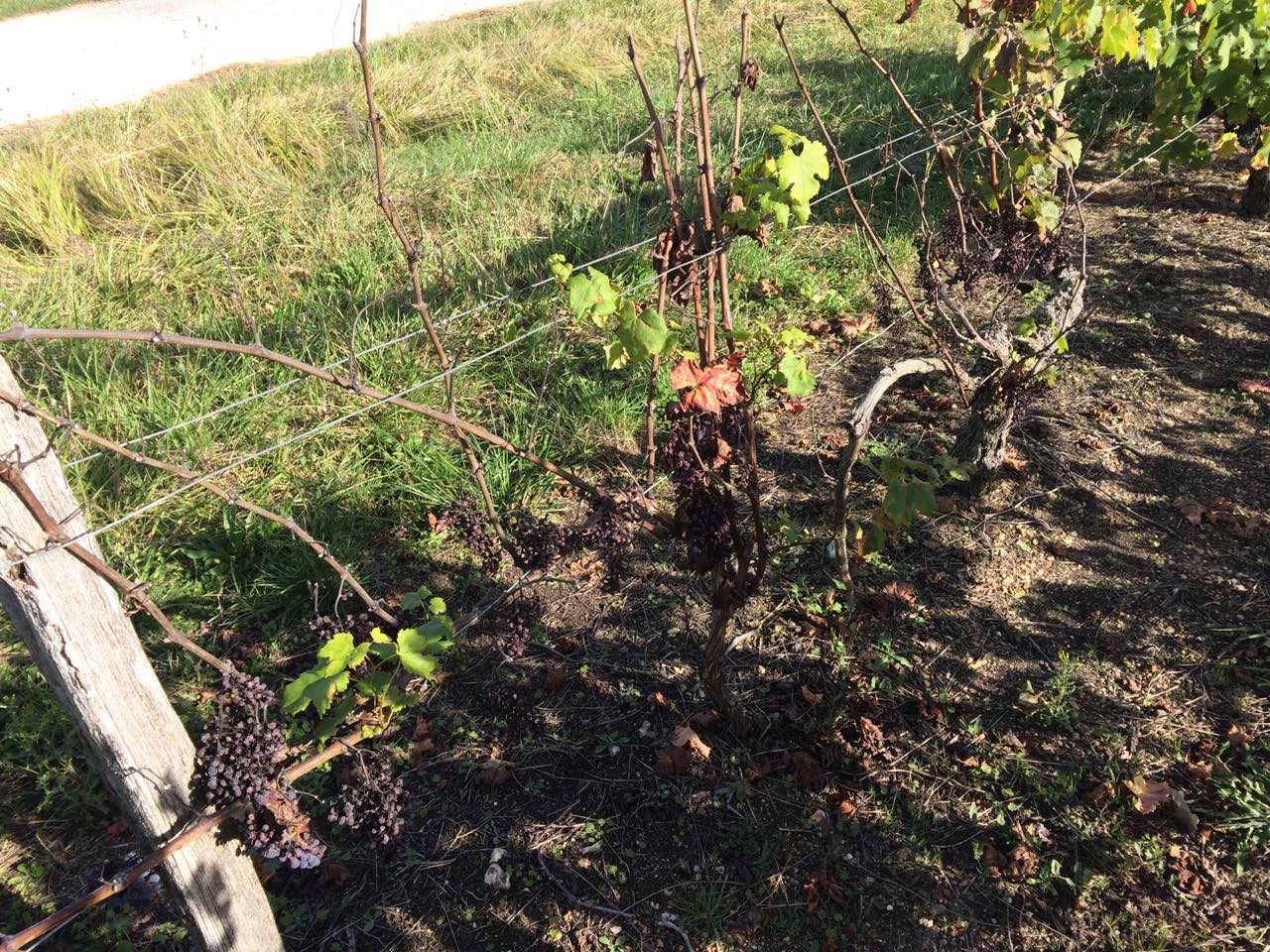
September 2017 (above and immediately below)
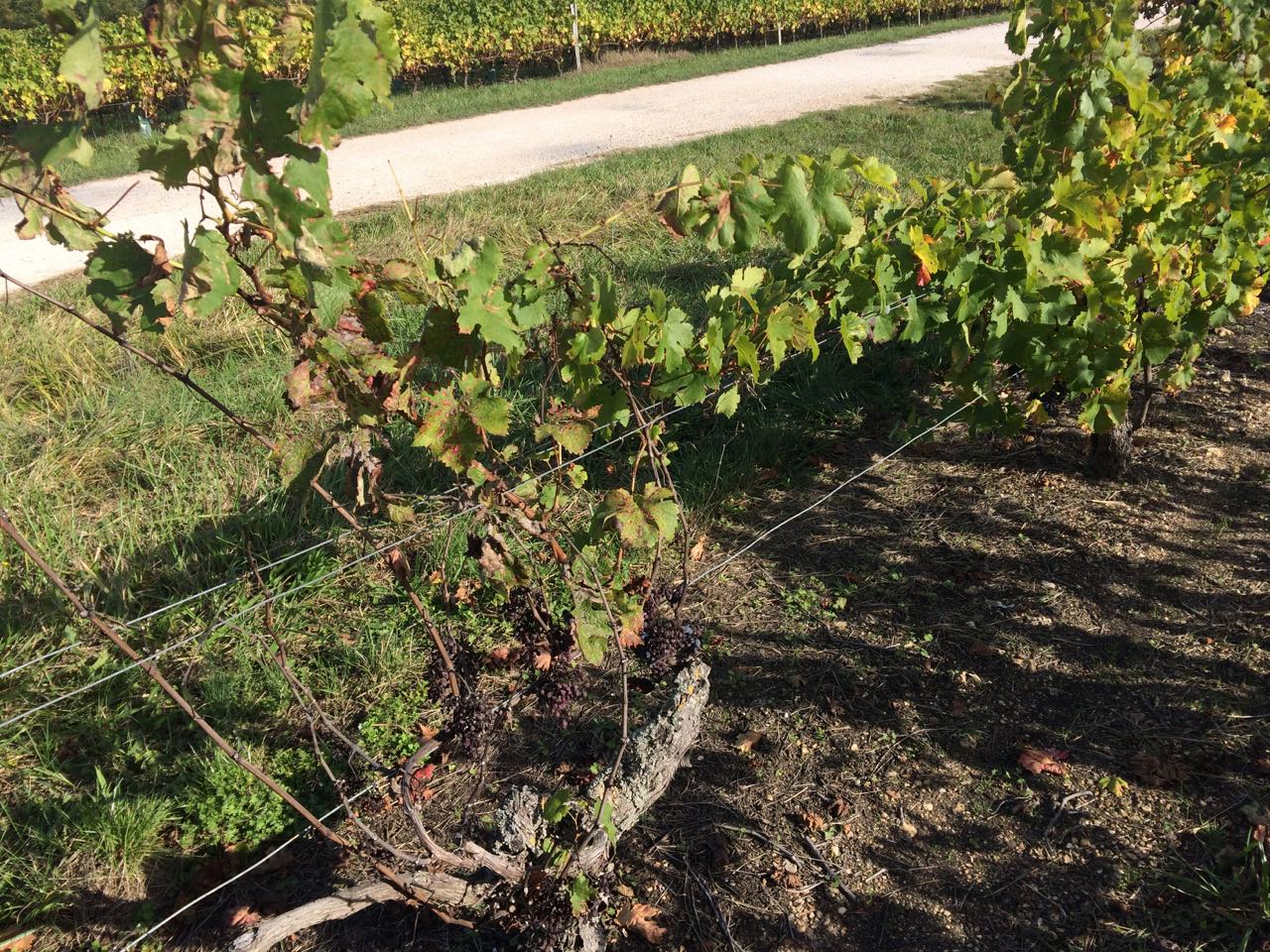
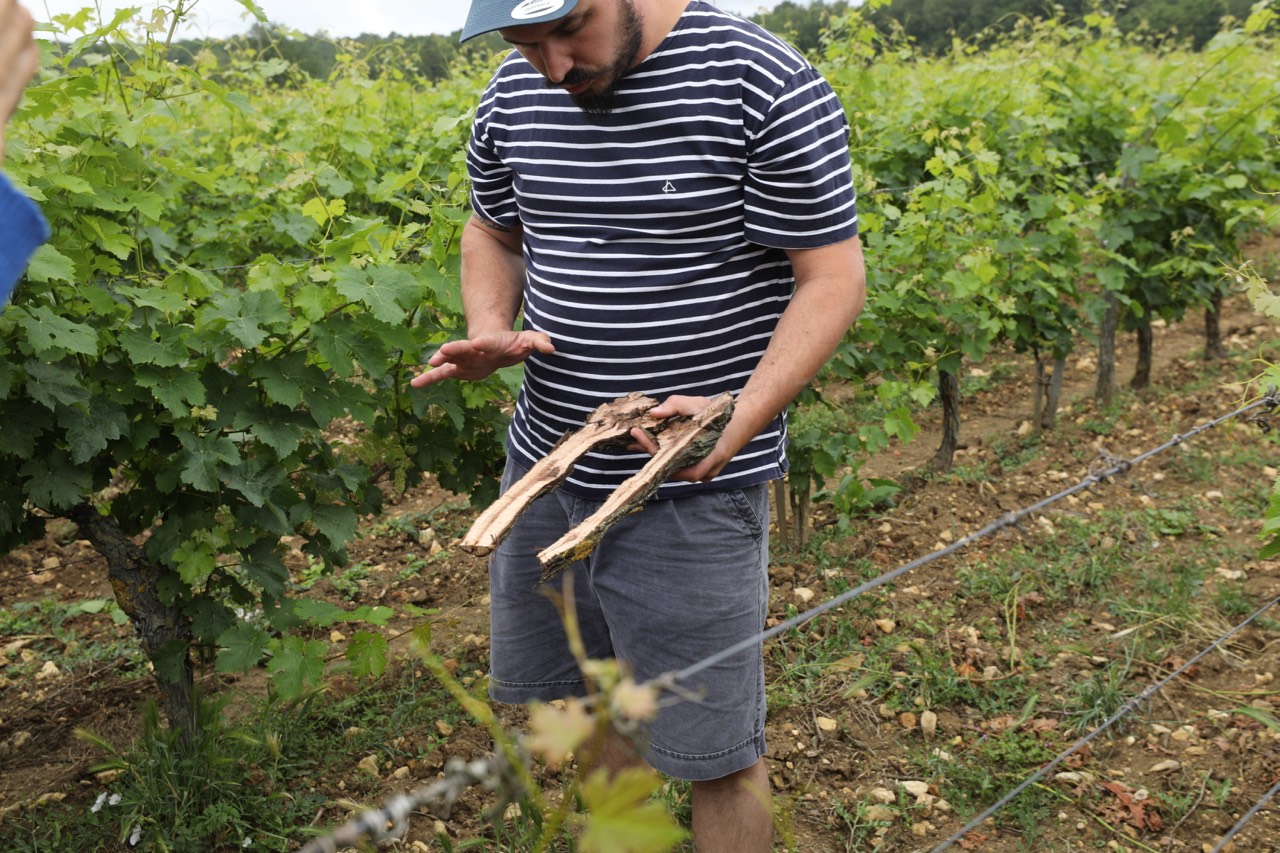
the progress of esca through a trunk of a vine
Last Tuesday (5th June 2018) I was invited on a day-long press trip to learn more about the fungal vine disease, esca, and the methods used to combat or alleviate it.
Esca is a major problem causing a significant proportion of vines to die every year. Annual mortality estimates vary from around 2% to 10% or more. This depends upon a number of factors including the year and the stress the vines are under as well as the grape variety. Worryingly for the Loire, especially Touraine and the Central Vineyards, Sauvignon Blanc is particularly susceptible to the disease.
There are numerous initiatives now underway to combat and to eventually find a solution. These initiatives put the vignerons at centre of the research. Unfortunately it is currently not known what has triggered esca – what the causes are. There are a number of theories – nurseries supplying below quality plants, excessive use of chemicals weakening/ killing off the micro-organisms around the roots, errors in pruning etc. There may, of course, not be one factor but a whole number of them.
Until 2001 arsénite de sodium was used to control esca. I understand that it wasn't a cure but helped to keep esca under control. In 2001 it was banned because it caused a number of cancers, especially amongst vineyard workers.
Esca is a fungal disease that apparently works it way down the trunk of a vine until it eventually cuts off the supply of sap which is carried up by two 'arteries'. Once this happens the vine dies very quickly – like a human hit by a stroke.
Methods of combatting/alleviating the disease
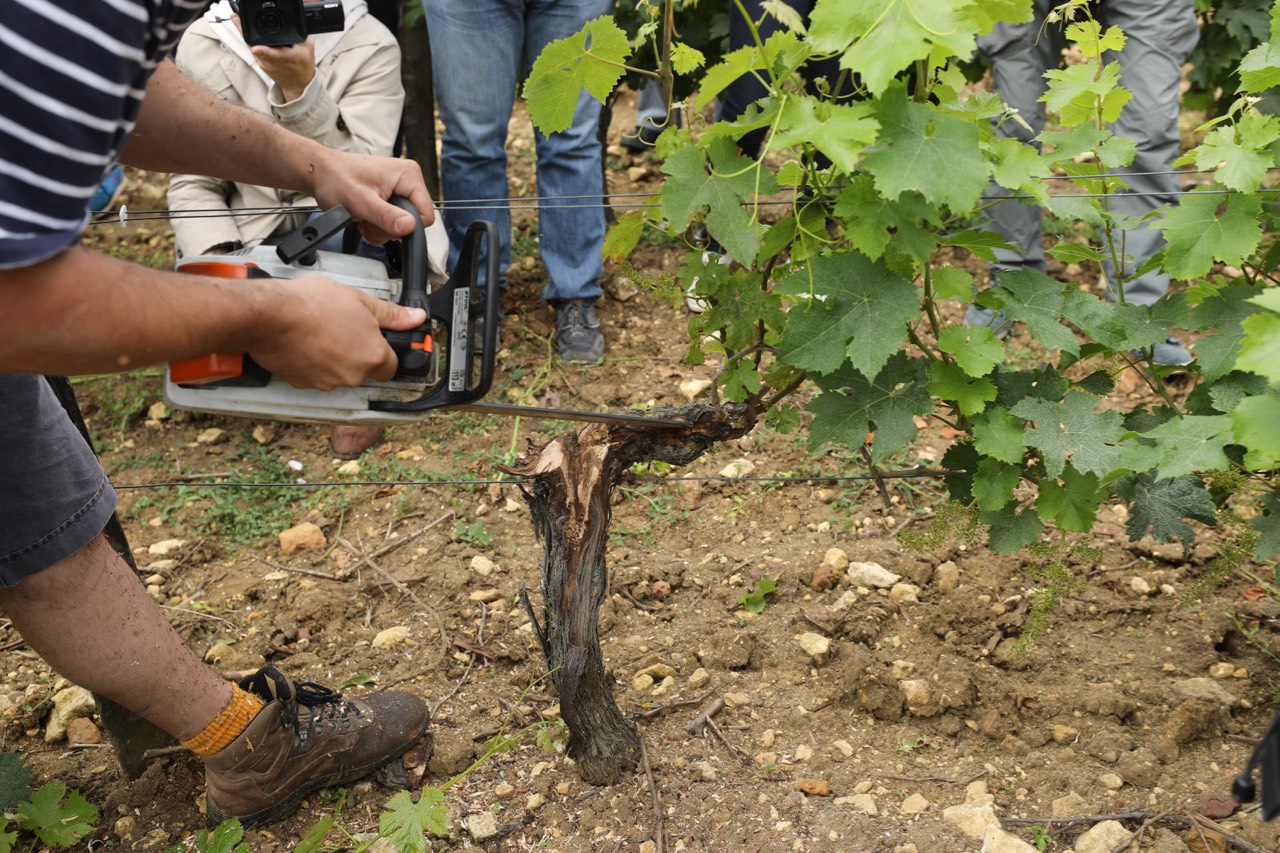
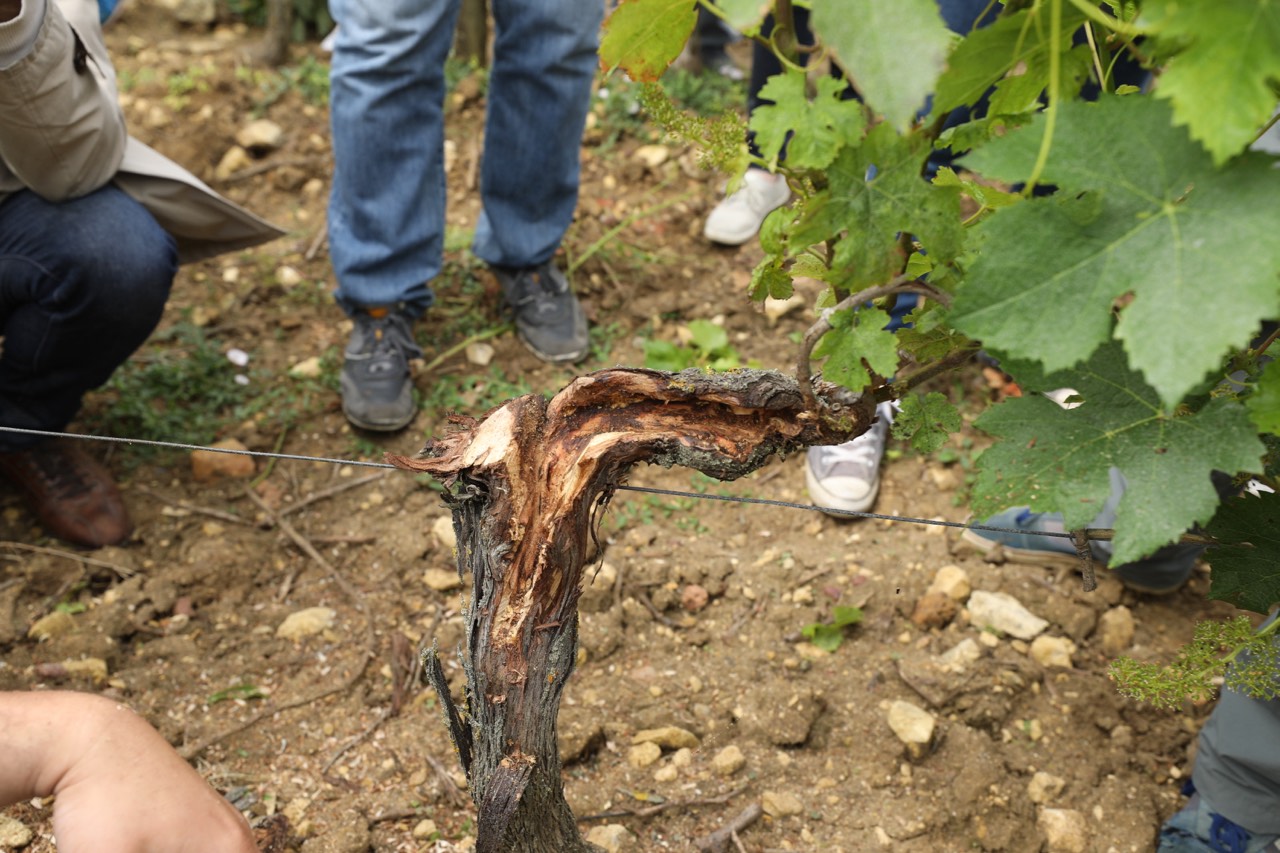
During visits last Tuesday to two domaines – Domaine de la Marinière (Chinon) and Domaine de Lavigne we were shown three different techniques –recépage, curetage and regrafting.
Curetage is the most dramatic as it involves using a small power saw to cut out the diseased parts of the vine's trunk. See the demonstration by Boris Desbourdes in the photos above. The second photo shows that the diseased wood has been cut away and the fungus exposed to the air, which kills it. Clearly this technique, which was trialled in Sancerre, requires considerable skill and a steady hand. It would only take a slight slip and your vine would be decapitated...
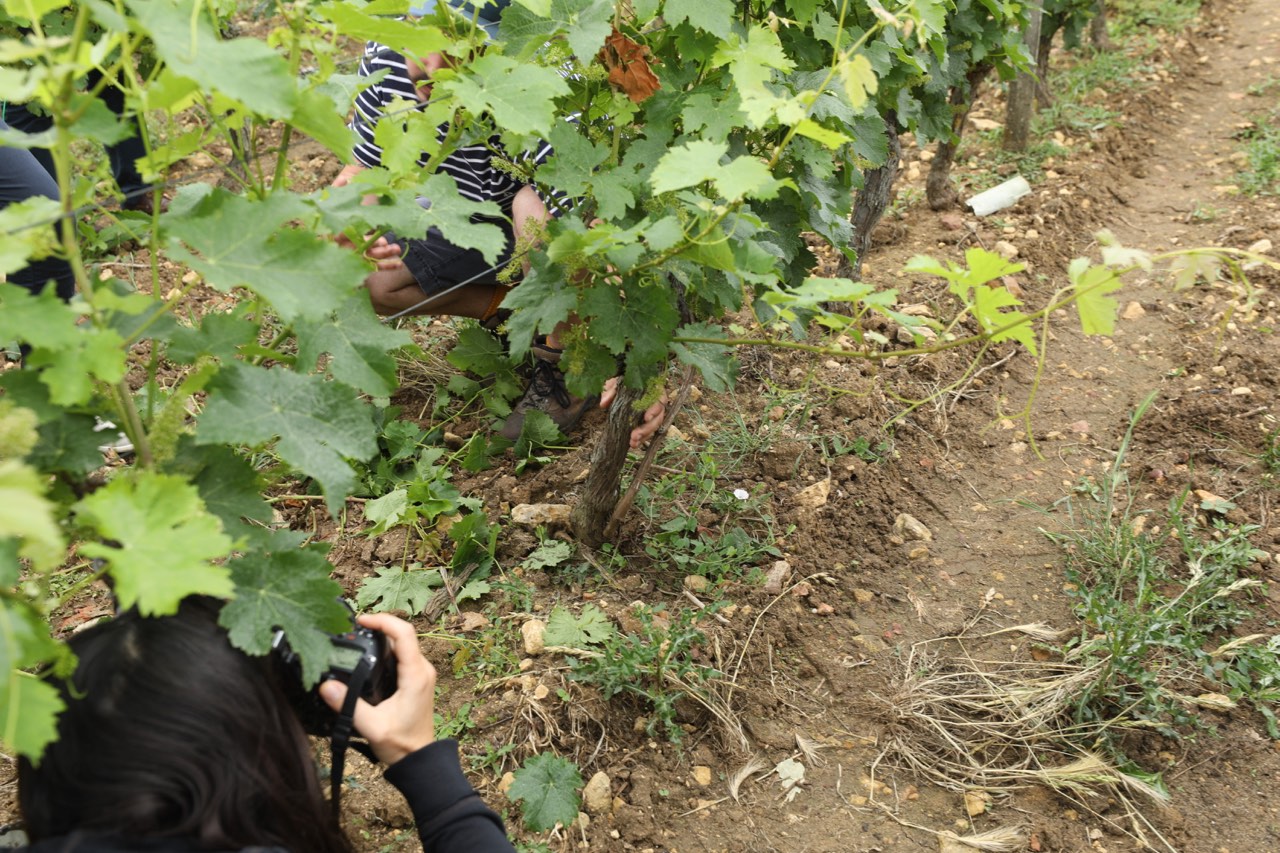 .
.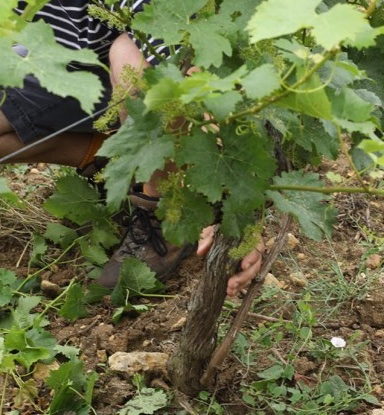
Recépage
This is a technique that is quite widely used in Champagne. It involves using a branch from the base of the vine just above the graft and training it to replace the existing trunk. This procedure can then be repeated at regular intervals.
•••
Regrafting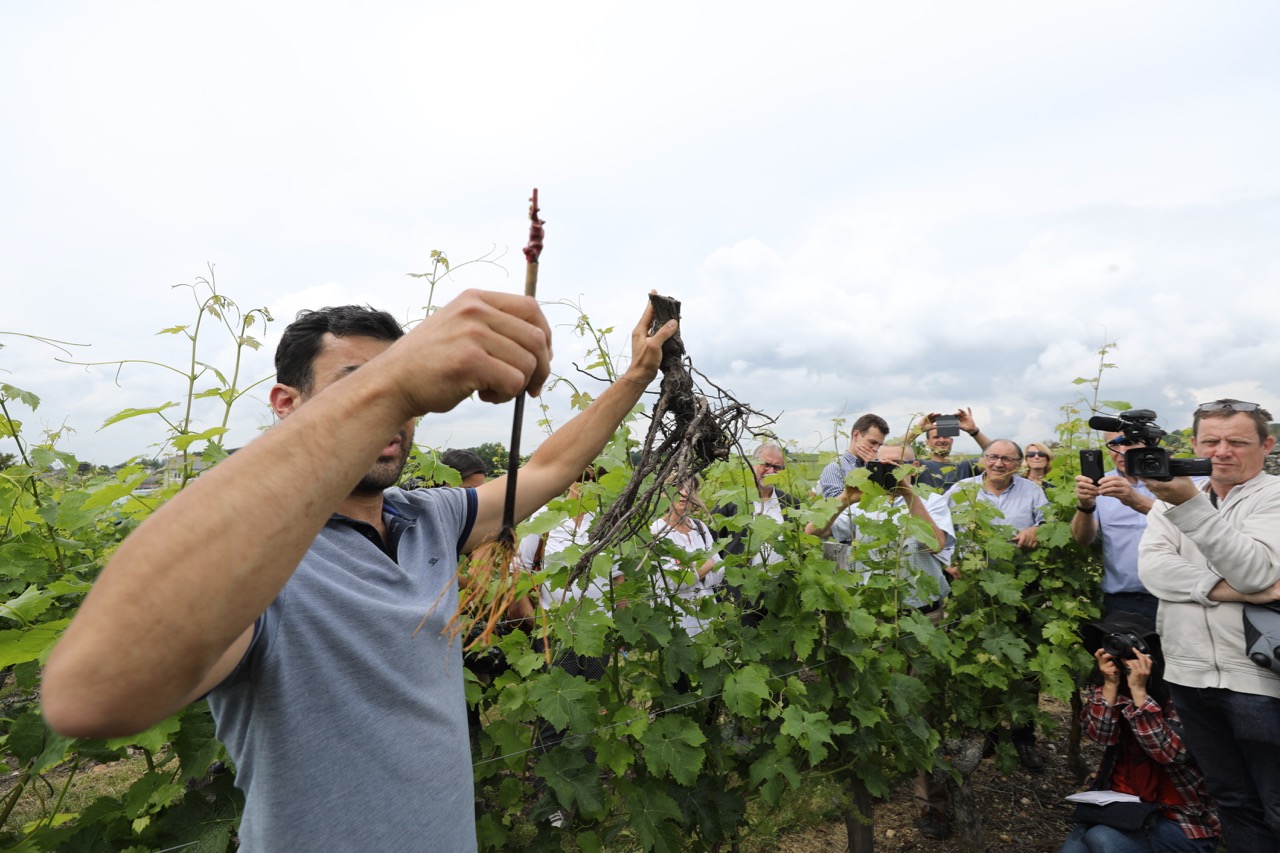
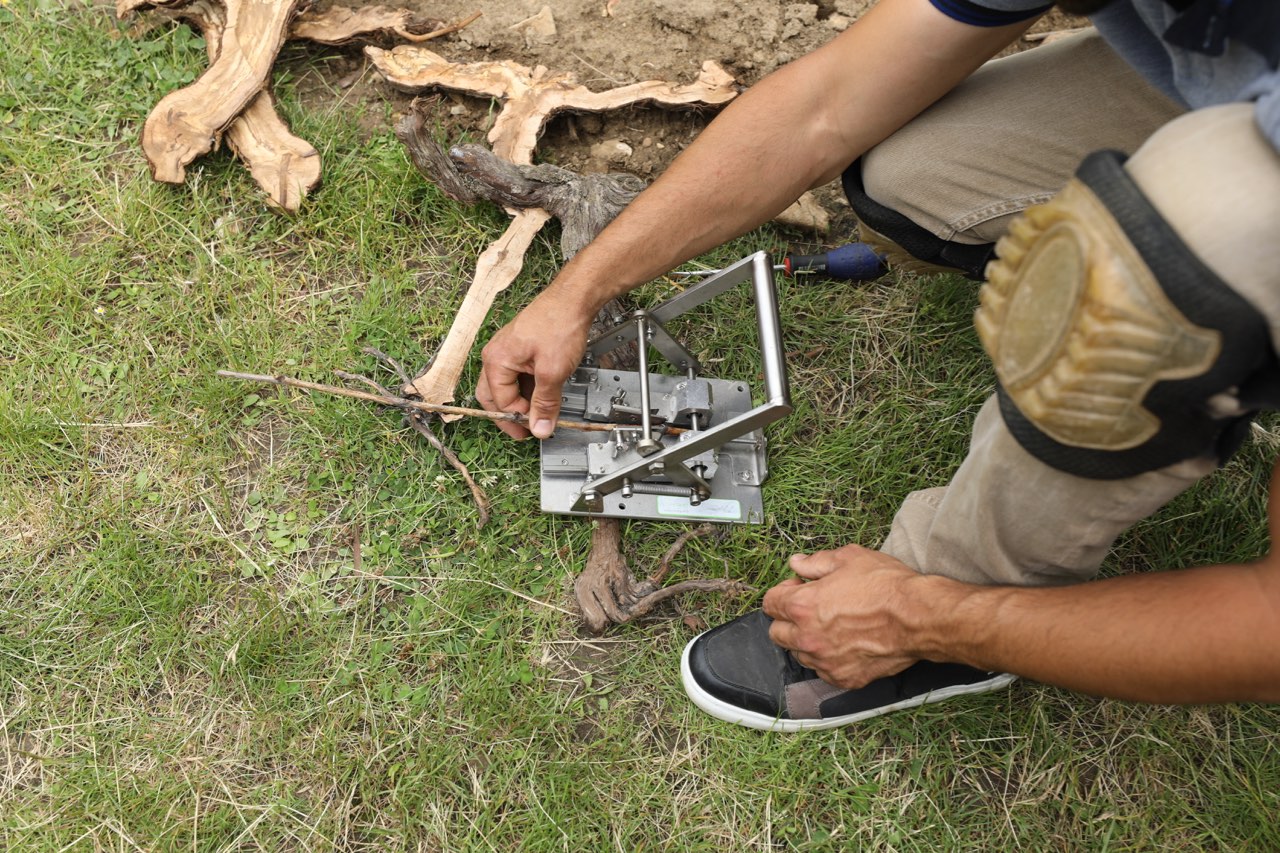
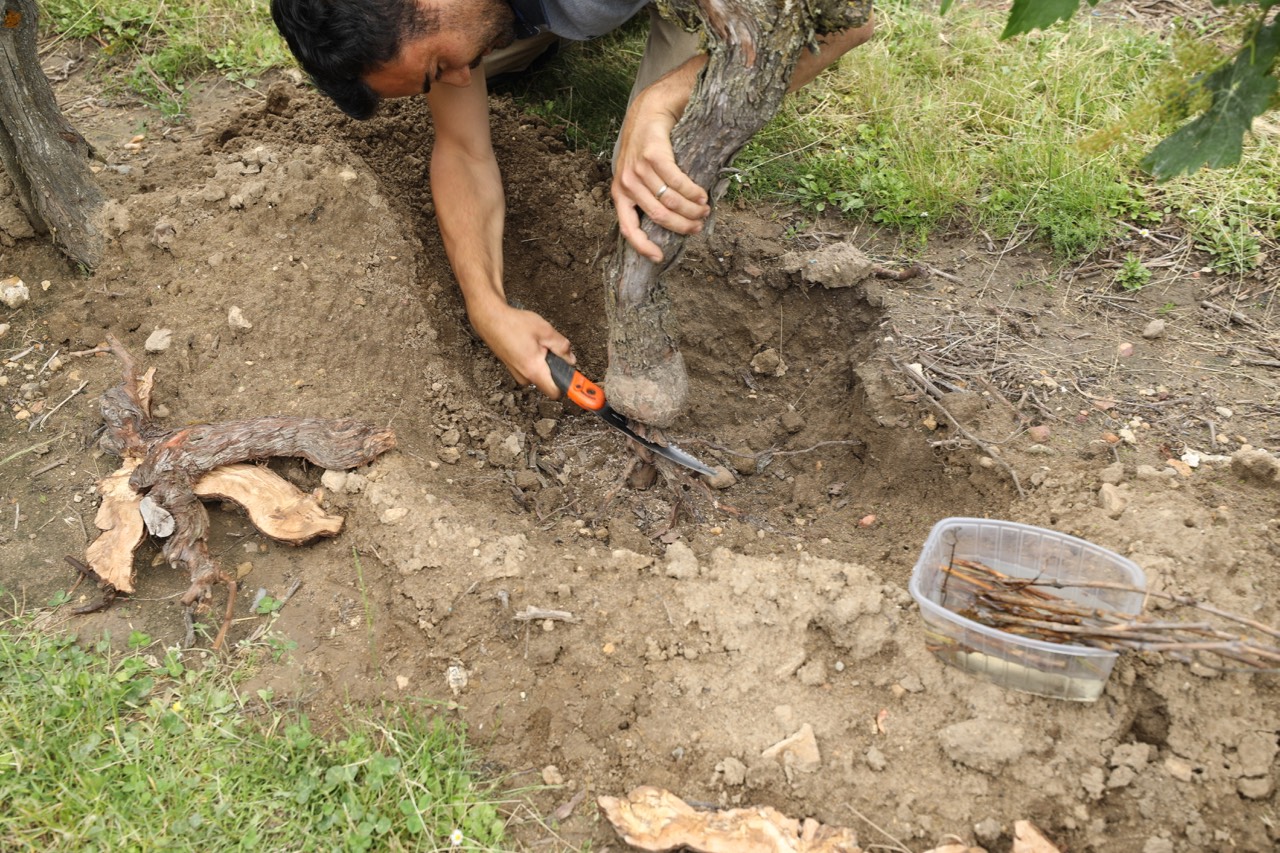

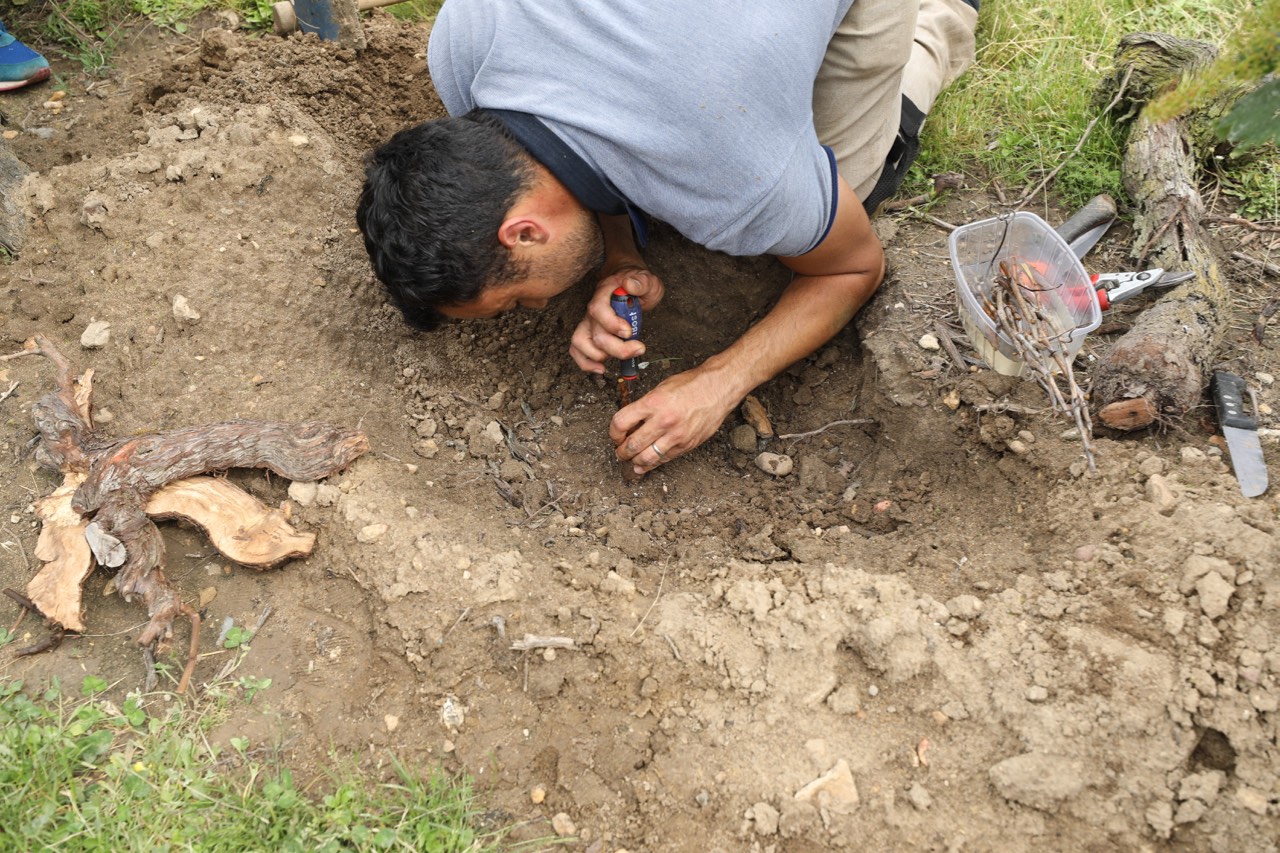
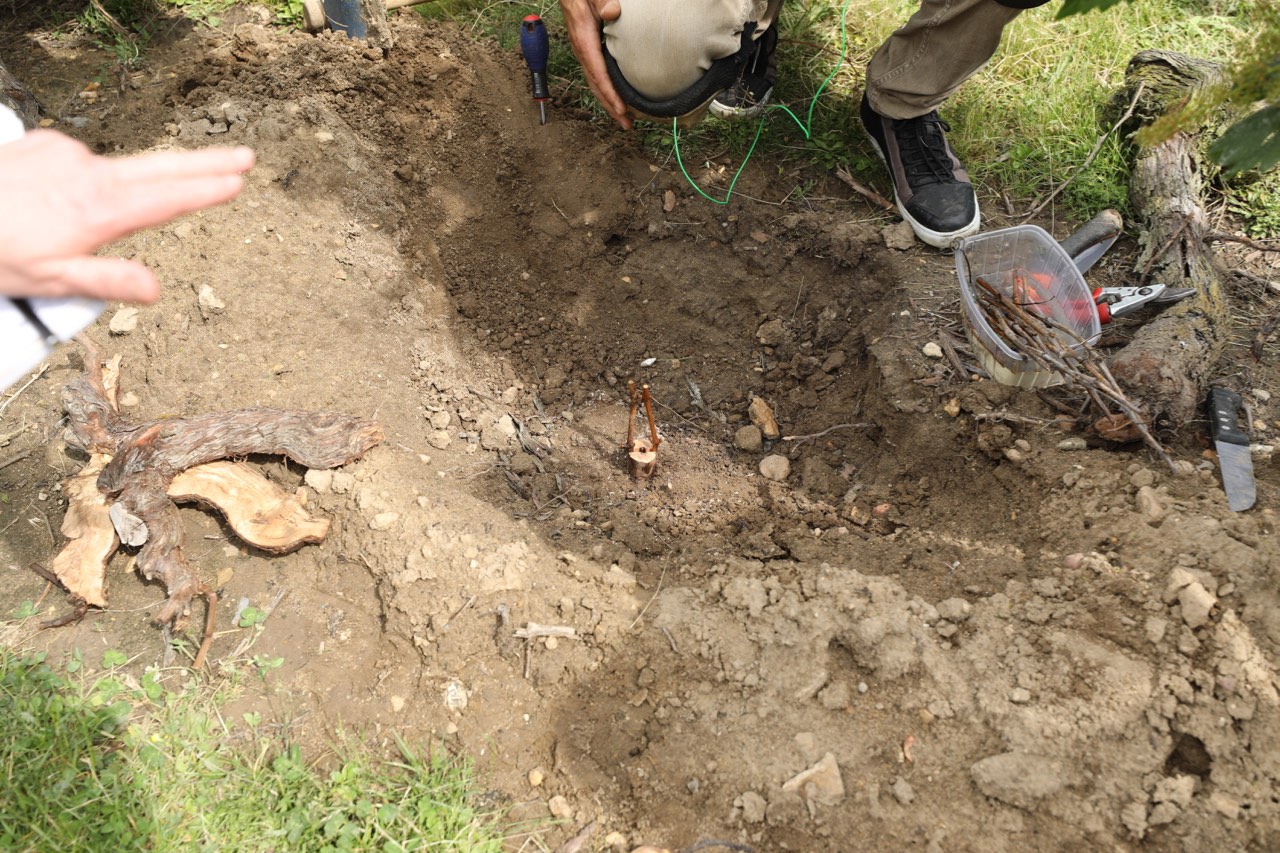
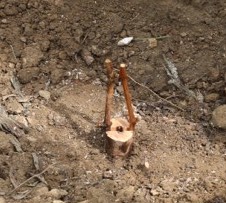
Two grafts – detail
Chassaing and his charts showed that using regrafting would put your vine back in full production after two years compared to seven to nine years if you replanted. At six years for a replanted vine you could expect to harvest 10 bunches of grapes compared to 27 for regrafting – 'seems far too high to me' if you are looking for quality.
Importantly costs ranged from 2.97€ to 4.02€ for regrafting instead of 9.87€ to replant. Chassaing explained that once a producer has a 40% grafting success rate then this is the breakeven point,

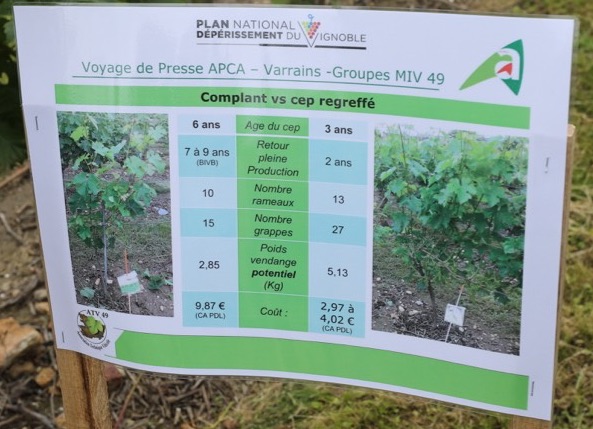
It will be fascinating to follows the combat against esca. Will there be a cure of will it be a question of choosing one or two strategies seeking to limit the effects of esca.
A suivré......
.

No comments:
Post a Comment